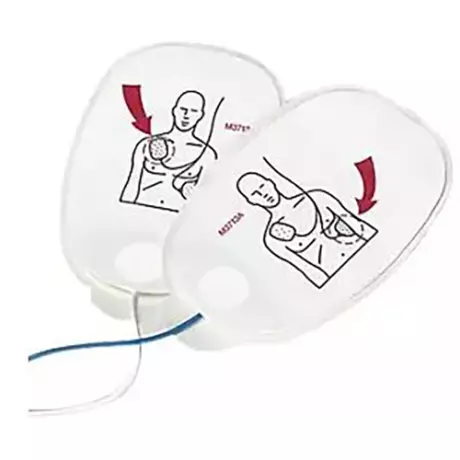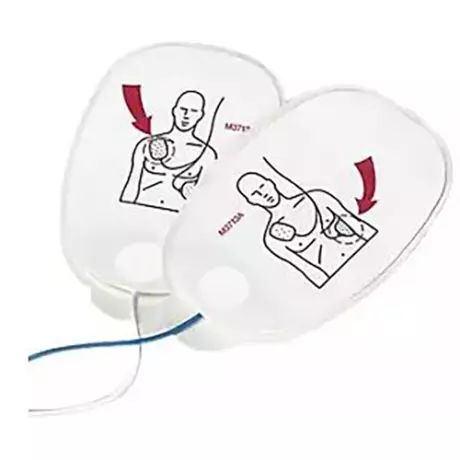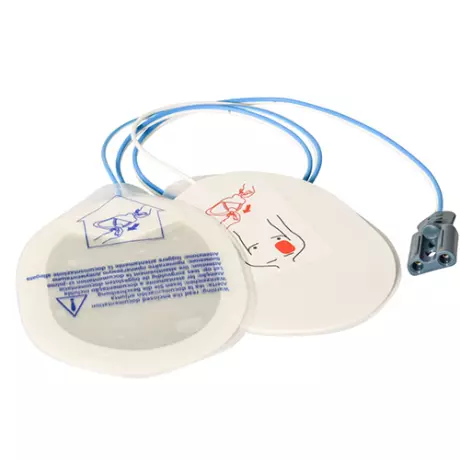
Defibrillation electrodes Original Philips...
Defibrillation electrodes Original Philips M3713A for adults, suitable for: Heartstart XL, XL+ Heart...
Portal and digital medical technology fair of the largest MedTech cluster in Germany

Defibrillation electrodes Original Philips...
Defibrillation electrodes Original Philips M3713A for adults, suitable for: Heartstart XL, XL+ Heart...

Defi electrodes - defibrillation electrodes...
Defi electrodes - defibrillation electrodes Original Philips M3713A for adults, suitable for: Hearts...

Defi electrodes for Philips (F7950)
Defi electrodes for Philips (F7950) Multifunction for adults Disposable, a 1 pair, PU= 1/10/100 Hear...
Ihre Suche lieferte keine Ergebnisse, aber Sie können sich auf dieser Seite präsentieren
Mit einem Eintrag auf Weltzentrum der Medizintechnik platzieren Sie Ihr Unternehmen bei Google & Co. ganz weit oben und erreichen so jeden Tag mehrere Tausend potentielle Kunden aus der Medizintechnikbranche. Mehr Informationen gibt es auf der Firma eintragen - Seite.

A defibrillator is a life-saving machine that delivers a shock to a heart in a heart rhythm known as ventricular fibrillation. This abnormal heart rhythm is very dangerous because it causes short pulses and can result in cellular suffocation. In addition, it can prolong a patient's life. The best way to use a defibrillator is to have it installed as soon as possible after birth.
A defibrillator works by administering electric shocks to the heart to restore it to a normal rhythm. This electrical shock resets the heart's irregular rhythm and prevents cardiac arrest. During this procedure, a trained professional can administer the electric shock. Alternatively, a layperson can perform the treatment. In this case, the device is connected to a patient's chest via a cord or a belt.
The defibrillator connects to the heart through a pair of electrodes that are covered with an electrically conductive gel. The electrical resistance to the electrodes can cause burns to the patient, so care must be taken to protect the key blocks and the electrodes. An IGBT is a high-performance semiconductor that improves efficiency and reliability, while a reed sensor ensures the patient's safety.
A defibrillator has many safety features. A gate driver provides reliable power supply, whereas an IGBT increases the efficiency of a heart rate monitor. Finally, a reed sensor is used to detect if a patient is in danger of a cardiac arrest. This ensures that the device is safe to use and is a great tool for emergency situations. This is an important safety factor, and defibrillators should be able to protect key blocks from damage.
During the initial procedure, the electrophysiologist will check the electrodes for proper placement and connection. A defibrillator may be connected to a pulse generator or to a chest-wall pacemaker, and can also be used to treat a heart rhythm with transcutaneous pacing. Depending on your needs, a defibrillator can be programmed to produce a continuous rhythm that suits your heart's needs.
There are two types of defibrillators. An internal one is designed to deliver a shock directly to a heart muscle. Manual devices are available in emergency rooms, but they should be kept out of the reach of children and elderly people. The FDA has categorized the St. Jude Medical device as Class I recall, which means it could cause serious injury or death. The device has been recalled because of a faulty battery, which is a common problem with any medical device.
A defibrillator is a lifesaving device. The electrodes are connected to the defibrillator by an adhesive pad, which is then peeled off after use. The device can also be used for synchronized electrical cardioversion and transcutaneous pacing. Its main purpose is to restore a heart rhythm. Most automated units have this device. The devices also are used for other purposes.
A defibrillator is a permanent medical implant that monitors irregular heartbeats. When necessary, it can send a small electrical current to the heart to correct the problem. Its battery can last anywhere from three to eight years, depending on how often you use the device. It's important to understand the risks and benefits associated with using a defibrillator, as these devices are a vital part of your overall health.
A defibrillator uses high-power electrical shocks to correct the fast heartbeat and restore a healthy heart rhythm. The device contains both high- and low-energy shocks. The high-energy shocks are more effective at restoring a normal heart rhythm, while the lower-energy ones are not effective enough. The devices also use safety sensing circuit blocks. This type of technology allows the device to detect and stop the heartbeat in a person in a matter of seconds.
Defibrillators are powerful devices that can shock the heart into a normal rhythm. The devices use paddles or sticky electrodes to send an electric shock to the heart. It is not recommended for everyday use. An automated external defibrillator is not a substitute for a professional medical device. If you need one, talk to your doctor or a trained healthcare provider to learn more about the options.
Become a digital exhibitor yourself in the online portal of the largest and best-known MedTech cluster region in Germany and inform the world of medical technology about your products and services as well as about news, events and career opportunities.
With an attractive online profile, we will help you to present yourself professionally on our portal as well as on Google and on social media.